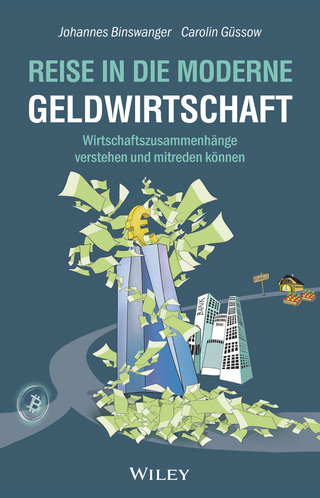
Business Cycles, Indicators, and Forecasting
University of Chicago Press (Verlag)
978-0-226-77488-6 (ISBN)
- Titel z.Zt. nicht lieferbar
- Versandkostenfrei innerhalb Deutschlands
- Auch auf Rechnung
- Verfügbarkeit in der Filiale vor Ort prüfen
- Artikel merken
The inability of forecasters to accurately predict the recent recession emphasizes the need for better ways for charting the course of the economy. In this volume, economists examine forecasting techniques developed over the past ten years, compare their performance to traditional econometric models, and discuss new methods for forecasting and time series analysis. The volume begins with an examination of the historical performance of economic forecasts, using data collected from a quarterly survey of macroeconomic forecasters from 1968 through 1990. Strengths and weaknesses of these predictions are discussed and new insights into the potential and limitations of forecasting are provided. The following three chapters use recently developed statistical techniques for predicting recessions and expansions, and examine the performance of these techniques during the 1990-91 recession. Chapter five explores why the spread between public and private interest rates has been a good predictor of real economic activity. Chapter six examines the relation between the duration of a business cycle and the likelihood of its end.
The final two chapters discuss methods for economic time series and forecasting.
James H. Stock is the Harold Hitchings Burbank Professor of Political Economy at Harvard University, faculty member of the Harvard Kennedy School, and a research associate of the National Bureau of Economic Research.
Acknowledgments Introduction James H. Stock And Mark W. Watson 1. Twenty-Two Years Of The NBER-ASA Quarterly Economic Outlook Surveys: Aspects And Comparisons Of Forecasting Performance Victor Zarnowitz And Phillip Braun Comment: Allen Sinai 2. A Procedure For Predicting Recessions With Leading Indicators: Econometric Issues And Recent Experience James H. Stock And Mark W. Watson Comment: Kenneth F. Wallis 3. Estimating Event Probabilities From Macroeconometric Models Using Stochastic Simulation Ray C. Fair Comment: James D. Hamilton 4. A Nine Variable Probabilistic Macroeconomic Forecasting Model Christopher A. Sims Comment: Pierre Perron 5. Why Does The Paper-Bill Spread Predict Real Economic Activity? Benjamin M. Friedman And Kenneth N. Kuttner Comment: Ben S. Bernanke 6. Further Evidence On Business Cycle Duration Dependence Francis X. Diebold, Glenn D. Rudebusch, And Daniel E. Sichel Comment: Bruce E. Hansen 7. Dynamic Index Models For Large Cross Sections Danny Quah And Thomas J. Sargent Comment: John Geweke 8. Modelling Non-Linearity Over The Business Cycle Clive W.J. Granger, Timo Terdsvirta, And Heather Anderson Comment: Andrew Harvey Contributors Author Index Subject Index
| Erscheint lt. Verlag | 15.11.1993 |
|---|---|
| Reihe/Serie | (NBER) National Bureau of Economic Research Business Cycles |
| Sprache | englisch |
| Maße | 16 x 23 mm |
| Gewicht | 652 g |
| Themenwelt | Wirtschaft ► Betriebswirtschaft / Management |
| Wirtschaft ► Volkswirtschaftslehre ► Mikroökonomie | |
| Wirtschaft ► Volkswirtschaftslehre ► Ökonometrie | |
| ISBN-10 | 0-226-77488-0 / 0226774880 |
| ISBN-13 | 978-0-226-77488-6 / 9780226774886 |
| Zustand | Neuware |
| Informationen gemäß Produktsicherheitsverordnung (GPSR) | |
| Haben Sie eine Frage zum Produkt? |
aus dem Bereich


